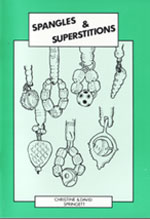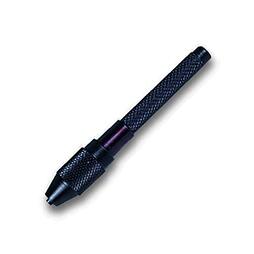Spangles

Spangling is a uniquely English thing which is found on east midlands style bobbins.
Spangles were originally a sequin like thing that were used to adorn goldwork from the middle ages. Sparkly by nature, it's no wonder lacemakers co-opted the term to describe the glittery beads at the end of their bobbins.
Bobbin spangles are beads that are used to weight bobbins and prevent them from rolling on pillows and can contain anything from glass beads to buttons and seeds / nuts.
Christine Springett has written a wonderful booklet on the history and origin of spangles; Spangles & Superstitions which is available from her website.
Spangles were originally a sequin like thing that were used to adorn goldwork from the middle ages. Sparkly by nature, it's no wonder lacemakers co-opted the term to describe the glittery beads at the end of their bobbins.
Bobbin spangles are beads that are used to weight bobbins and prevent them from rolling on pillows and can contain anything from glass beads to buttons and seeds / nuts.
Christine Springett has written a wonderful booklet on the history and origin of spangles; Spangles & Superstitions which is available from her website.
Spangling
There are many ways to spangle bobbins and here are just a few. I spangle the same way as Chris but the Winslow way and Jenny's way are just as effective. You need to find the method that works for you.
|
Louise West - how to spangle lace bobbins
|
Chris Parsons demonstrates how to spangle
|
|
Spangle the Winslow Bobbins Way
|
Jenny Brandis - using tiger tail and crimps
Jenny has lots of greate resources on her website.
| ||||||||||||
What to do when your wire won't go through your bobbin for spangling
|
When you can't get your wire to go through your bobbin you will need to make the hole a little bigger. This is very straight forward to do but needs a couple of bits of equipment.
I use two things to do this. Micro drill bits and a pin vice. I use an elipse pin vice because 1) I happend to own one and 2) it's probably one of the best on the market. Pin vices are designed to hold a micro drill bit really tight. Because the handle is hollow you can position the drill bit at just the right length so you are less likely to break. I then add in a micro drill bit that is just slightly larger than the existing hole and carefull drill in from both sides in turn to widen the hole. If I still can't get the wire through, I go up one size at a time until the hole is big enough to take the wire. |

